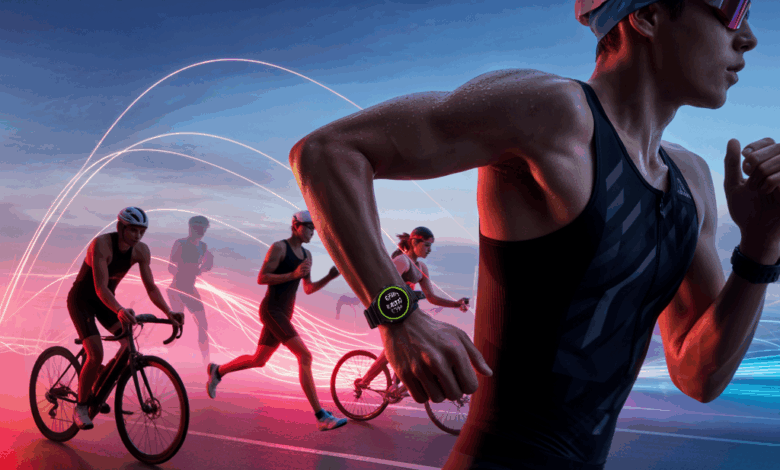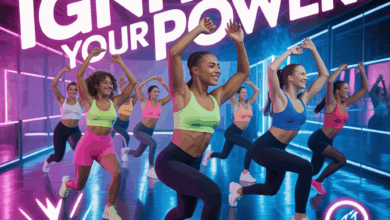Triathlon Watch Showdown — Choose the Best Multisport GPS Watch for Race Day

Have you ever stood at the swim start, heart racing, wondering if your watch will survive the open water, guide your transitions, and still have battery left for the run? If that thought makes you nervous, you’re not alone. Picking the right multisport GPS watch can mean the difference between a smooth race-day performance and a tech disaster. In this triathlon watch showdown, we break down what matters most — accuracy, battery life, triathlon modes, and real-world usability — so you can choose with confidence.
Why the right triathlon watch matters
As a serious triathlete, your watch is more than a timepiece: it’s a coach, a metrics hub, and a safety tool. The best triathlon watch tracks swim metrics (stroke rate, SWOLF), bike power/cadence, and run dynamics while letting you switch quickly through multisport modes. It also stores workouts, communicates with sensors (HR strap, power meters), and syncs to an app for analysis. In this showdown we’ll compare critical features and give you practical training and lifestyle tips to get the most out of whichever device you choose.
Key features to compare before you buy
Multisport mode and transition handling
Look for seamless transitions (one-button or quick swipe) so you don’t waste seconds between swim-to-bike and bike-to-run. Real-world example: Maria shaved 30 seconds off her transition time by using a watch with customizable lap buttons to mark wetsuit removal and bike mount.
GPS accuracy and open-water tracking
GPS reliability affects pacing and course navigation — crucial in open-water swims and bike loops. Consider watches with multi-band GNSS support for better accuracy in wooded courses or urban settings.
Battery life and power management
Long-course athletes need watches with extended battery life or an ultra-endurance mode. Test battery drain by recording a long ride with GPS and music to simulate race-day conditions.
Heart rate and sensor compatibility
Wrist HR sensors are convenient, but chest straps or optical HR armbands often give better accuracy during high-intensity intervals and wet swims. Ensure your watch pairs with ANT+ or Bluetooth sensors you plan to use.
Navigation and safety features
Breadcrumbs, route import, back-to-start, and live-tracking can be lifesavers during long training rides. If you train alone, prioritize live-tracking or incident detection.
Triathlon Watch Showdown: how to test watches yourself
Before committing, try a short side-by-side comparison. Here’s a simple three-step test plan:
- Swim test: wear the watch in the pool and open water. Check stroke count and distance against lane counts or buoys.
- Bike test: do a 1-hour ride with GPS and a power meter connected. Compare average power, cadence, and recorded distance to your bike computer.
- Run test: complete intervals and a tempo run. Note HR responsiveness and GPS pace smoothing on tight courses.
Training tips and workout variations that pair well with your watch
Brick workouts for race simulation
Brick sessions (bike-to-run) are essential. Try a 45/20 brick: 45 minutes at threshold on the bike followed immediately by 20 minutes at race pace run. Use your watch’s multisport mode to get accurate transition splits and perceived exertion data.
Swim sets to improve sighting and pacing
Practice open-water sighting with 6 x 400m at moderate effort, focusing on sighting every 6–8 strokes. Use your watch to track stroke rate and intervals to avoid drifting out of effort zone.
Run intervals and recovery monitoring
Intervals like 8 x 400m at faster-than-race pace with equal recovery let you use the watch’s lap functionality to judge repeatability. Monitor HR variability and recovery time metrics to avoid overtraining.
Nutrition and recovery: make your watch smarter by pairing it with habits
Wearable data is only useful if paired with smart fueling and recovery. Practical tips:
- Carb strategy: For races under 90 minutes, prioritize a pre-race carb-rich breakfast. For longer events, plan gels or real foods with 30–60g carbs/hour depending on body weight and intensity.
- Hydration and electrolytes: Use your watch to set hydration reminders on long training days and practice electrolyte replacement in training, not just race day.
- Sleep and recovery: Follow recovery scores from your device and schedule easy days when HRV or sleep quality is down.
Real-world examples: picking the right watch by athlete type
Novice triathlete: If you’re doing a sprint or Olympic distance, prioritize ease-of-use, reliable GPS, and affordability. A straightforward multisport watch with a clean app ecosystem will speed up learning curves.
Age-group competitor: You’ll want advanced training metrics (VO2 max, training load, recovery), sensor support, and strong battery life for back-to-back sessions.
Long-course/IM athlete: Battery life and navigation are paramount. Choose a watch with ultra-endurance modes, route navigation, and excellent multisport transition controls.
What to consider after purchase
- Customize screens: set sport-specific data fields like cadence, power, pace, and lap splits.
- Firmware updates: keep the watch updated for improved features and bug fixes.
- Case and strap care: replace worn straps and rinse after saltwater swims to prevent corrosion.
Frequently Asked Questions
1. What makes a watch truly “triathlon-ready”?
A triathlon-ready watch must support multisport mode with quick transitions, accurate GPS for open-water swim and bike courses, long battery life, and compatibility with external sensors like chest straps and power meters for precise data.
2. Do I need a chest strap or is wrist HR good enough?
Wrist HR is fine for zone-based training and easy runs, but chest straps (or optical armbands) offer greater accuracy during high-intensity intervals and swims. For race pacing and interval training, pairing a chest strap with your watch is a smart move.
3. How much battery life should I expect for long-course events?
Look for watches that advertise 20+ hours in full GPS mode or offer an ultra-endurance mode extending to 60+ hours with reduced sampling. Always test battery in real conditions, as music, sensors, and mapping features shorten runtime.
Conclusion — make your pick in the triathlon watch showdown
Choosing the right triathlon watch comes down to matching features to your goals: multisport modes and quick transitions for race-day efficiency, robust GPS and battery life for long-course reliability, and solid sensor support for accurate training metrics. In this triathlon watch showdown, weigh usability and ecosystem (app, firmware updates) as much as raw specs. Ready to take the next step? Try a side-by-side test on a short brick workout, then explore targeted workout routines and nutrition guides to get the most from your new device. For ongoing recovery and lifestyle ideas, check our wellness tips page.
Which watch are you considering? Share your experience or question in the comments — I’ll help you narrow down the best option for your race goals.





